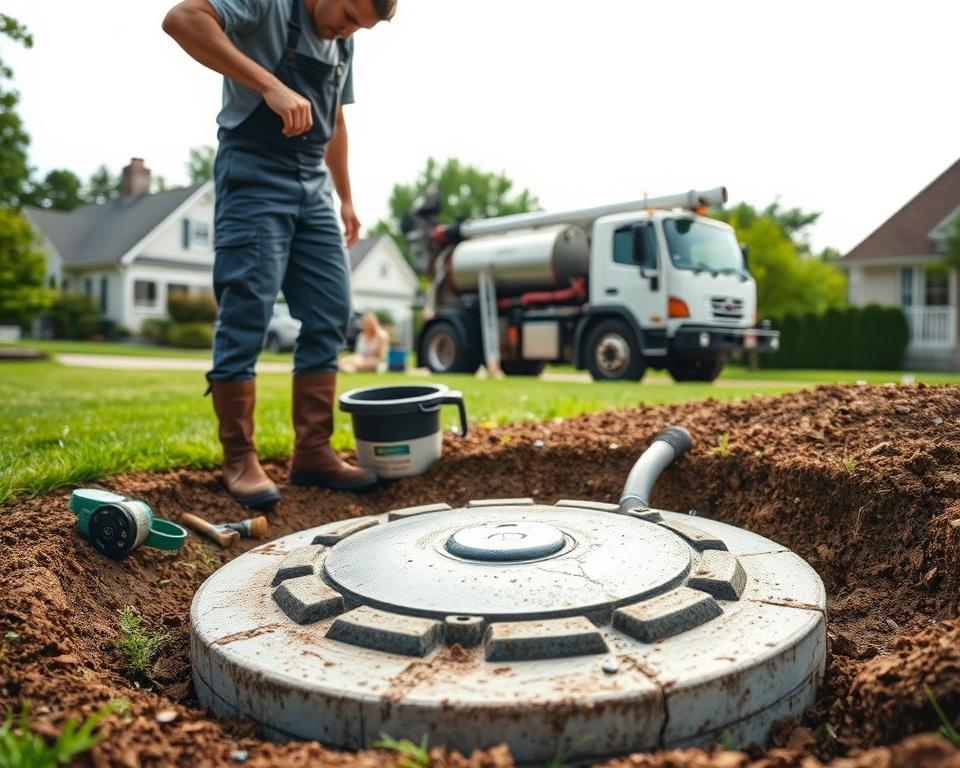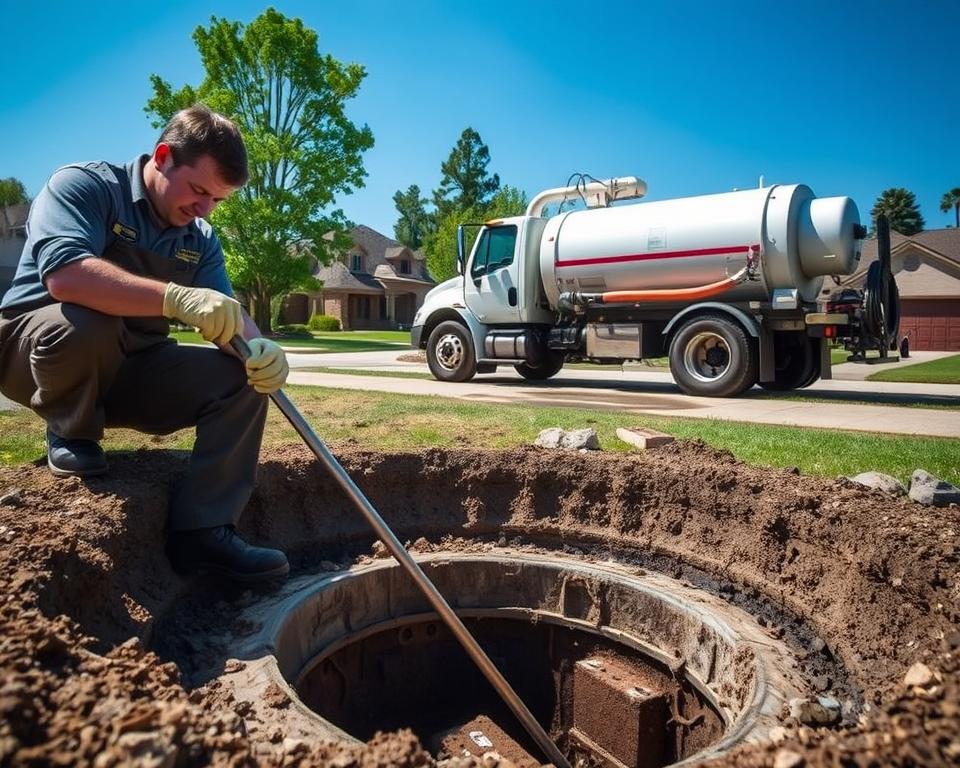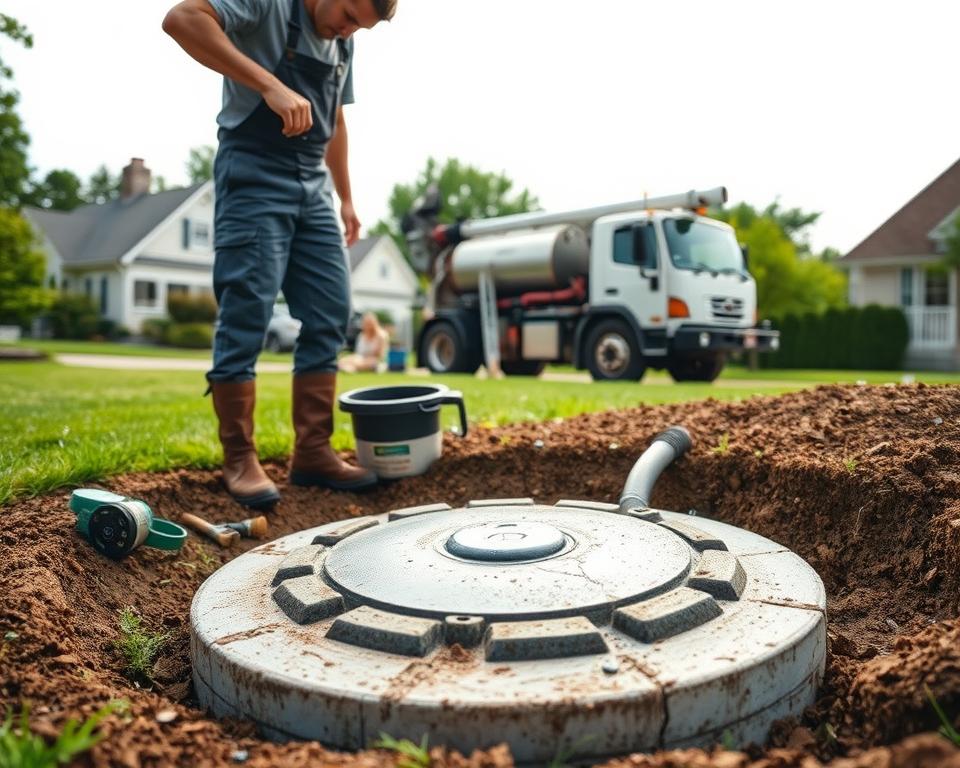Must-Know RV Septic Tank Service Care Tips
Have you ever thought about what takes place to your RV’s Septic tank while you’re rolling down the highway? It’s more than avoiding bad smells. Caring for your RV Septic tank in good shape helps secure problem-free journeys. A regularly serviced system avoids messy incidents and costly repairs. Still, many overlook this crucial care. Within this article, we explain the necessity for regular RV water pump pressure tank. We’ll spotlight the value of upkeep and share tips for maintaining your recreational vehicle’s Septic tank. Gear up for carefree adventures!
Key Insights
- Regular RV Septic tank service is essential for optimal performance.
- Understanding your RV Septic system assists head off costly repairs.
- Proactive maintenance wards off unpleasant odors and clogs.
- Create a pumping schedule based on your usage.
- Employ best practices for dumping your holding tanks.
- Steer clear of common mistakes to extend the life of your Septic system.
- Know when to seek professional help for Septic services.
RV Septic System Basics
An RV Septic system is key for any camper. It includes multiple holding tanks that manage waste effectively. You’ll find three main tanks in an RV: the fresh water, the gray, and the black tank. The fresh water tank supplies clean water for drinking and cooking. Meanwhile, the gray tank holds wastewater from sinks and showers, ensuring cleanliness. The black tank, specifically for toilet waste, also has a vent to reduce odors.
Preserving a healthy camper sewage system requires knowing how these parts connect. Regular checks of the tank levels are necessary to avoid overflow and secure everything runs smoothly. Getting to know the termination valves is crucial too. These valves are pivotal in effectively handling waste disposal. By familiarizing yourself with these components, you can keep your RV in prime form and relish your travels without any unnecessary trouble.
| Holding Tank | Function | Typical Size |
|---|---|---|
| Fresh Water Tank | Supplies drinking and cooking water | 30-100 gallons |
| Gray Tank | Stores wastewater from sinks and showers | 30-60 gallons |
| Black Tank | Stores toilet waste | 30-50 gallons |
Benefits of Regular RV Septic Tank Service
Consistent RV Septic tank service is key to maintaining your system efficient and long-lasting. Without timely maintenance, you could face system failures, nasty scents, and costly repairs—issues that interrupt your adventures.
Overlooking the upkeep of your RV’s Septic system may cause it to back up. This not only impacts your RV’s function but also your comfort levels. A well-maintained and regularly cleaned system is necessary for trouble-free trips, offering you a serene travel experience.

Scheduled maintenance extends your sewage system’s lifespan and preserves a clean living space. Watching your Septic tank helps you catch issues early. This proactiveness cuts costs and stress, granting you confidence during your journeys.
Ideal RV Septic Tank Pumping Schedule
Determining the best schedule for RV Septic tank maintenance hinges on the vehicle’s usage. For those constantly on the road or staying in their RVs, it’s wise to drain the black tank every three-to-five days. This practice keeps cleanliness and prevents unexpected issues during voyages.
Weekend adventurers can usually wait until they return home to pump their Septic tank. Keeping waste in the tank too long, though, can cause build-up that impedes the tank’s function and smell control. It’s crucial to watch the tank’s level closely, get ready for disposal once it hits around two-thirds full to keep everything running properly.
The capacity of your Septic system, along with how you use your RV, will guide when to pump. Being aware of these aspects boosts your RV’s performance and minimizes the dangers of poor waste management.
| Travel Style | Suggested Drain Schedule | When to Pump Right Away |
|---|---|---|
| Frequent Usage | Every 3-5 days | Level reads 2/3 |
| Weekend Trips | After return home | Unpleasant odors or lazy draining |
| Extended Trips | Every 2-3 days | Sight glass shows full |
How to Empty RV Holding Tanks Properly
Effectively managing a recreational vehicle’s holding tanks is crucial for a enjoyable camping experience. Start by draining the black tank first. This strategy allows the gray water to flow through and flush out the hose. Be sure the use of a high-quality sewer hose for a secure connection and to reduce spills. Once the tanks are emptied, fully flushing the black tank is vital. Using a built-in black tank flush or comparable alternatives can dramatically cut residue.
After the emptying process, it’s critical to close both valves securely. This action is important to maintain a fully operational Septic system. Additionally, RV owners must utilize dump stations properly and follow local laws. Routine cleaning practices for recreational vehicle Septic tanks are key. They preserve the system’s optimal functionality and avert future odors.
Preventing Odors and Clogs in Your RV
To manage odors and stop clogs in your RV, careful attention is key. The task begins with ensuring enough water in the holding tanks. Adequate water aids in breaking down waste effectively, cutting bad smells.
Selecting suitable toilet paper is important in this process. Opt for RV-safe toilet paper that dissolves quickly, stopping clogs. This minor adjustment considerably supports maintaining seamless waste flow.
Using enzyme-based treatments can further boost waste decomposition and odor control. These bio solutions aid keep your RV smelling fresh. It’s also vital to regularly examine vent pipes for obstructions to guarantee good airflow and stop odors from infiltrating your living area.
Errors to Dodge in RV Septic Maintenance
Maintaining your RV’s Septic system correctly is crucial for its performance and longevity. When non-biodegradable items like wipes or feminine products are flushed, they can cause major blockages. These blockages can result in various problems that are challenging to resolve.
Not using enough water when flushing can also damage the system. It leads to waste buildup, resulting in bad odors and potential damage. Furthermore, a common mistake at full hook-up sites is leaving the black tank valve open. This allows waste to pool at the tank’s bottom.
Preventive measures involve regularly flushing and rinsing tanks after emptying them. Skipping maintenance can snowball into significant issues necessitating costly repairs. Being prepared and knowledgeable protects both your RV and your finances.
Signs You Need Professional RV Septic Help
Knowing when to seek professional RV Septic services is critical for maintaining a healthy Septic system. Some indicators suggest the need for expert intervention. Should you spot slow-draining tanks or get persistent foul odors coming from your RV, it is prudent to act promptly. These signs often indicate underlying issues that demand a thorough Septic tank service for resolution.
Visible leftover waste after emptying can also show problems within your Septic system. This situation may not resolve with routine maintenance and may require the use of specialized equipment. Professionals are ready to handle complex challenges using tools, such as high-pressure water jets, to ensure a thorough cleaning process.
Timely professional assistance can make a big difference. Minor issues can quickly escalate into more severe complications without proper care. Investing in professional RV Septic services preserves the integrity of your system and extends its lifespan.
| Warning Signs | Recommended Action |
|---|---|
| Slow draining tanks | Contact professional RV Septic services for assessment |
| Persistent foul odors | Schedule Septic tank service for diagnostics |
| Visible leftover waste | Seek immediate assistance from a professional |
| Frequent clogs | Consider expert cleaning solutions |
Sustaining RV Septic Performance Over Time
Long-term care for RV Septic systems demands attention past basic pump-outs. Carrying out deep cleaning of tanks every few months prevents buildup and lengthens system life. Inspecting dump valve seals regularly prevents leaks. Additionally, sanitizing the system preserves it clean and functioning well.
It’s vital to monitor tank sensors to verify they work correctly. Incorrect readings may result in over-filling, impacting performance. Periodic sensor checks and refining maintenance schedules can stop this problem.
| Action | Frequency | Why It Helps |
|---|---|---|
| Deep Cleaning Tanks | Every 3-6 months | Stops residue accumulation |
| Inspect Dump Valve Seals | Monthly | Reduces risk of leaks |
| Sanitize System | Every 6 months | Controls bacteria |
| Monitor Tank Sensors | Monthly | Prevents over-fill |
Forward-thinking maintenance is central to your RV Septic system’s long-term health. It lays the groundwork for enjoyable and carefree travel experiences.
All In Sanitation: Your Partner in RV Septic Solutions
All In Sanitation stands out at crafting RV Septic services that meet each client’s distinct needs. Whether it’s routine pump-outs or thorough tank cleaning, they understand the critical role of a well-functioning Septic system in your RV’s performance.
With extensive expertise in RV Septic systems, All In Sanitation delivers top-tier guidance on maintenance and care. Their team is knowledgeable in the unique challenges RV owners face and delivers effective solutions when troubles arise.
Opting for All In Sanitation enables RV enthusiasts dive in their journeys, leaving Septic concerns to a reliable ally. Their dedication to excellent service brings confidence and boosts the pleasure of adventures on the open road.
In Summary
Looking after your RV Septic tank is essential for seamless travels. It’s important to understand your system and stay on top of regular services. This ensures you won’t face unexpected issues on your journey. These key steps cover frequent pumping and practicing sound waste management practices.
Efficient long-term care keeps your system in top shape. By following the provided maintenance tips, you can improve your travel experience. This approach helps avoid expensive repairs later. Keep in mind, sidestepping common errors and understanding when to obtain professional help are important.
Bottom line, being proactive in your RV Septic system’s maintenance secures a hassle-free adventure. It allows you to focus on creating lasting memories. So, apply these steps to heart and savor your road trips to their fullest.


